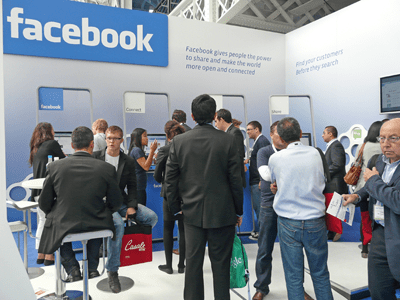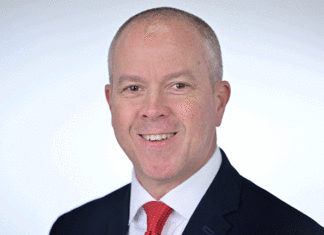Marketing in the 21st century is one of the great conundrums for small business owners, who must navigate a fast-changing online world. Banner ads, Google ads, Facebook ads, video, photos, email campaigns, search engine optimization – the options keep proliferating and the technology is changing fast.
Southwest Washington digital media experts say that Facebook plays an increasingly important role in how businesses can promote themselves to potential clients.
“Social media is 30 percent of the battle when it comes to a full digital campaign right now,” says Matthew Janik, owner of Fringe Digital Marketing Agency in Vancouver. “That’s been increasing, steadily, year-over-year. It’s going to continue to increase”.
But many small businesses are toiling away at Facebook posts that never get seen, or engaging in other tactical errors. Here are five tips for using Facebook right.
“In the Clark County area, the best time to post is Friday in the afternoon,” says Jim Mains, of High Five Media. “Afternoons or early in the morning are the best times to post. Fridays, people pop on to Facebook.”
But that’s not a hard and fast rule, Mains says. It’s important to know your audience.
“Don’t spend money on advertisements during the night or evening – usually,” he says. “I’m working with a group right now that is using all of their ad dollars at night, because they want to reach people who are struggling with depression.”
Selling a sleep aid? A nighttime message might also work. But in general, mornings or afternoons are the way to go.
2. Engagement trumps sales
“People don’t go onto Facebook to purchase things. They go onto Facebook to engage with other people, see what’s going on with friends, track their interests,” says Jeremy Friedland, owner of Digital Marketing Maniacs in Vancouver.
“If you are trying to directly sell on Facebook, especially as a local service business, it just isn’t effective unless you have an incredible offer,” he says. “You can’t tell your potential customers ‘Go to my website and get a tooth whitening’ or ‘Go to our website and sign up for moving service.’”
Facebook is more effective when you’re focused on awareness – letting potential new customers know you’re there – and engagement – building your relationship with existing customers – than at generating direct sales, Friedland says.
An effective Facebook post does not just show up on potential customers’ feeds – it should prompt comments, sharing or some other response. But you can’t just count on Facebook users to do what you want.
“People have to be told what to do, or they won’t do it,” Friedland says. “You have to have a call to action, whether it is ‘leave a comment below’ or ‘share this,’ ‘like this,’ ‘go to our website and buy this.’”
The specific “call to action” you issue should reflect your companies online goals.
“It could be, I want them to engage with my Facebook post – to share or post comments,” Friedland says. “It could be, I want them to click through to my website. Or, it could be, I want them to convert, to opt in to an email list.”
Whatever your goal, be sure to ask for it if you want your customers to respond.
4. Get to know the “boost”
“Traditional Facebook pay-per-click ads on the side of the screen, in my experience, have been super ineffective,” says Janik. “It’s alluring, because it looks cheap relative to Google Adwords, but you have to redefine what ‘cheap’ means. If you spend $100 on Facebook ads, the return on investment may be zero, whereas if you spend $1,000 on Google and you get $5,000 back, you’ve made good money.”
That doesn’t mean you shouldn’t spend to promote your Facebook content – just that you should be strategic about which advertising tools you use. Janik and other marketers say the Facebook “boost” is where it’s at.
Boosting involves paying to have a traditional Facebook post show up in more people’s news feeds. Boosted posts can be targeted based on location, age, gender and interests.
“One of the biggest mistakes I see – businesses don’t properly use Facebook’s targeting tools when placing ads,” says Friedland, another fan of the “boost” feature. “Rather than posting a lot of content when nobody is on the page to see that content, they need to get more people to like their page who are in their target demographic.”
Boosted posts can get you in front of those target customers.
“I’m a firm believer in boosts,” says Mains. “It’s hard to get noticed without spending money. With boosts, you can cater to people’s likes, dislikes, places they’ve been, and you can really zero in on who the ad is going to reach.”
5. Customer service still matters
“When people comment and say they’ve had a bad experience, it’s time for what we call reputation management,” Janik says. It may be tempting to try to erase bad reviews from the Internet, but that’s not the best approach, he says.
“The best thing you can do, if somebody makes their problem with you public, is to address it publicly and have amazing customer service,” he says. “Oh my gosh, my name is Matt, I’m the owner of the company. Here’s my email address, my phone number, we’ll offer you a free widget.”
Customers expect to see some bad reviews when they’re researching a product or a company.
“There’s always a chance that something could break,” Janik says. “If I see that when a product breaks down, a customer service person from the company says, ‘I’m sorry that broke down, we can get that replaced within two days,’ this can go from a huge negative to a huge positive.











Great article Courtney. It was good to see fellow marketing agencies adding their insights and perspectives. There are a lot of options out there when it comes to marketing, and I firmly believe that when used properly, Facebook can be very effective to grow local businesses.